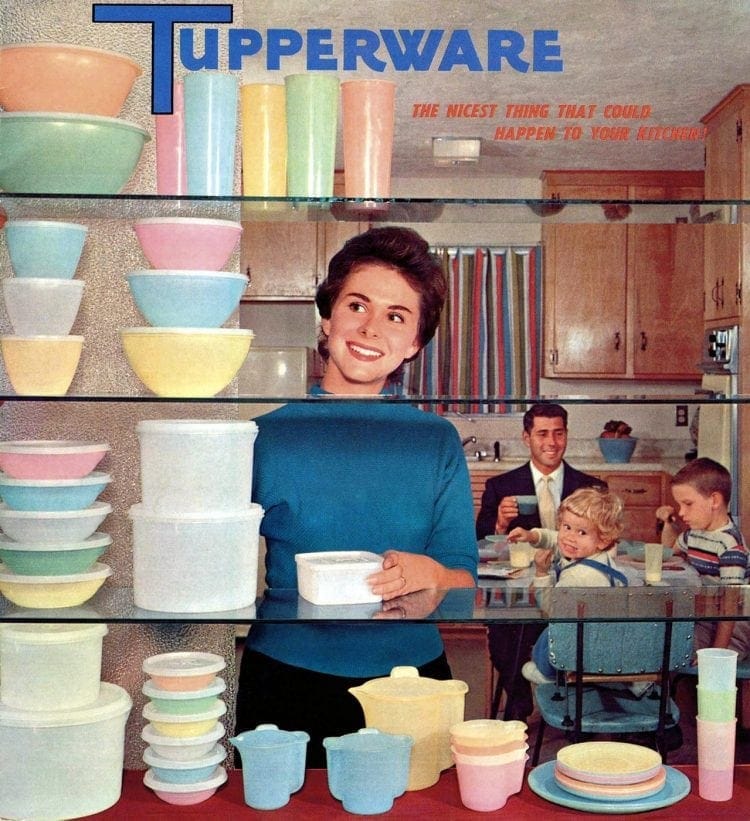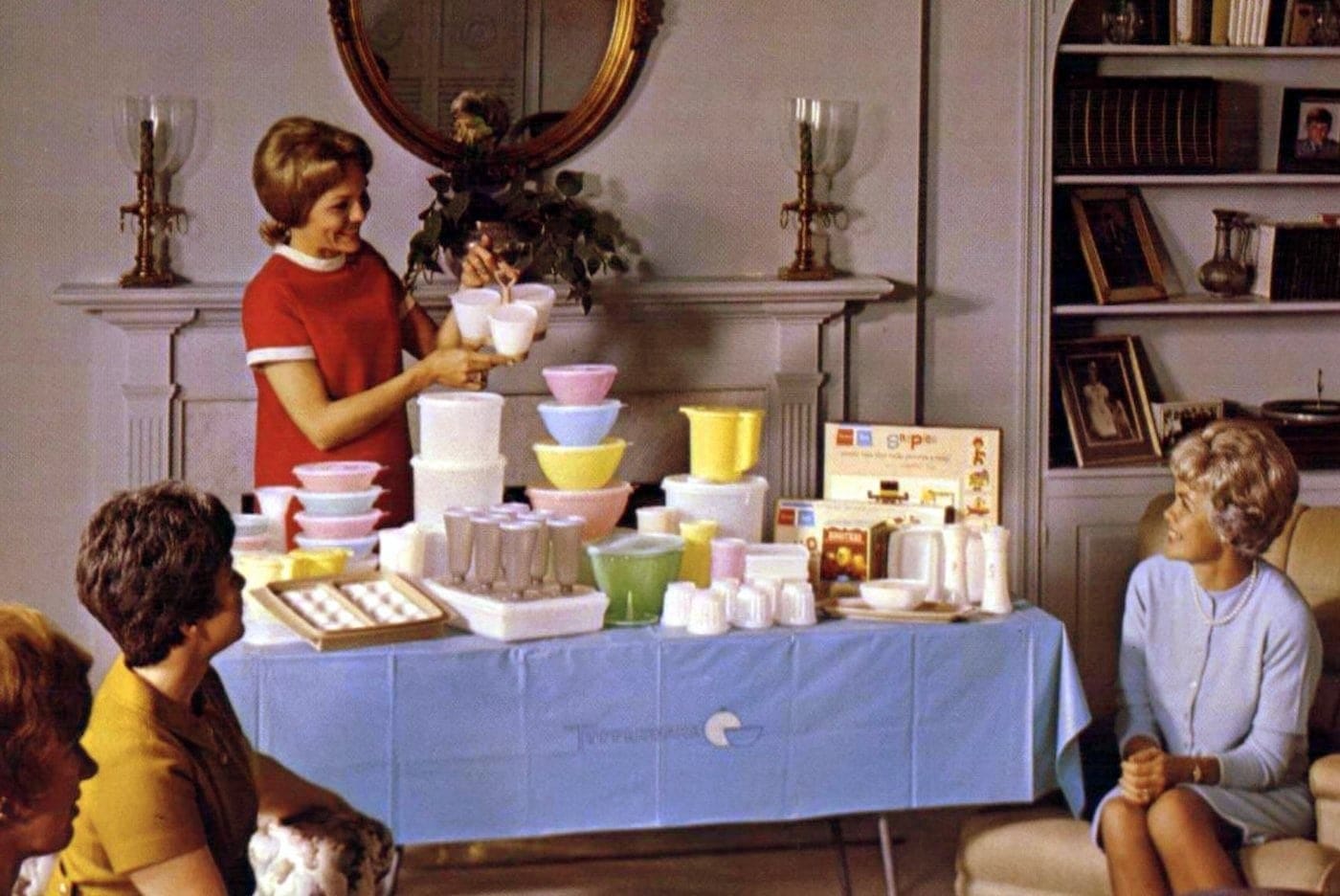How did Tupperware get to $2 billion in annual revenue? 💸
Revenue share model combined with a product that just works.
Welcome to the 111th edition of the GrowthX Newsletter. Every Tuesday & Thursday I write a piece on startups & business growth. Today’s piece is going to 94,400+ operators & leaders from startups like Google, Stripe, Swiggy, Razorpay, CRED & more
Remember your early childhood? Your mom packed your lunch in a Tupperware, long before you could even pronounce the name. This is that story.
Quick context 🗓
Tupperware US launched in 1946. It wanted to disrupt the food storage category with it’s ‘quality of plastic’ and the iconic ‘airtight seal’. It was also solving problems with metal food storage containers - especially with the need to transfer heat & food dryness.
But, it got poor traction at the start 😔
The ‘seal’- which is Tupperware’s unique selling proposition, became a huge mystery for customers → they simply didn’t understand how to use the seal.
Fast forward 2020, Tupperware made over $2 billion revenues 💸
So what changed in the time period for Tupperware?
First, it picked the right customer - Housewives.
Tupperware’s target audience were housewives. These women who were used to using the otherwise clumsy traditional storage that would leak, leave stains, or failed to withstand the low temperatures of a fridge.
Interestingly, in 1950s, the US <> Korea war began with over 1.78 million American men serving in the war. During that time, most of the US army men’s housewives were dependent on their husband’s income.
Second, it understood the customer motivation.
The pop culture back then made these housewives a subject of jokes on most TV shows, magazines, & gatherings. The housewives wanted to gain back their self esteem. Stakes were high. Personal motivation was even higher.
Third, it understood how the ideal customer gets influenced.
For the groups of housewives, they had the same problems, they needed the same solution - both at a personal & household level. They wanted to share their problems with each other and also earn back their self esteem.
This led to start of “Tupperware party” 🎉
The idea was a genius. Execution was even more brilliant. Tupperware created an ad campaign to get housewives to become a Tupperware "consultant".
These housewives would invite their friends & neighbours into their homes for a community gathering. The gathering was named as “Tupperware party”. It had a showcase of Tupperware products, and it’s unique seal. Each host/hostess were rewarded with free products based on the level of sales made at their party. Plus, they would even get cash rewards for higher sales.
In a go, Tupperware solved for all it’s problems.
First, showing the seal → customers understood the utility. Second, getting the right users → Housewives. Third, solve for seller motivation → free products & cash rewards. Lastly, recurring revenue → hosts get incremental rewards on every sell.
The cherry on the top was how it acquired new hosts.
Ofcourse Tupperware went bonkers on newspaper ads showing “Earn $100-$400 per week by hosting Tupperware parties”. But, it only allowed existing happy customers to become the “consultants”. That way it maintained the positive community loop of happy customers. Which helped it scale it’s seller program to hundreds of thousands.
Most D2C products struggle to get distribution right ✨
Especially when they are starting out, just like Tupperware. The framework to take from this issue is not to start “Sugar parties” or “SleepyOwl parties” but to deeply understand few things.
First, who is the customer that you are solving for? Second, what pis*es them off?
Third, how can your brand solve for it? In Tupperware’s case it was the earning potential and self esteem → maybe it could be something else for your product. I want you to spend 5 minutes thinking about this today.
2022 has been exponential for Growth Shorts 🚀
We went from a small 2500 to 35,000+ active reader community. Growth teams from top 100 internet companies such as Airbnb, Amazon, Google, Meta, Stripe, CRED, Gojek, PayTm, Discord, Rippling, Razorpay, OLA, Groww, InMobi, Jio, Practo & more consume this newsletter every freaking week. I never imagined we would get here in 2022. Thank you from the bottom of my heart for pushing me to write with all your beautiful replies to every newsletter ❤️
Dropping top 10 issues from this year’s writing ✨
WhatsApp Vs PhonePe war is dead. Click to Read
UPI is killing India's candy business. Click to Read
Up for an interview for a growth role? Click to Read
Why is Google giving free 1 TB cloud storage? Click to Read
How Bisleri made ₹7,000 Cr from clean water? Click to Read
Truecaller's competitor is now Indian Government. Click to Read
How Dolo 650 killed BIG pharma? Click to Read
The framework behind Chat GPT's distribution Click to Read
How Amazon is killing Meta + Google’s ad business? Click to Read
Why Rameshwaram is growing big? Click to Read
If Growth Shorts added value to your though process this year, spread our top series with your WhatsApp groups. Let’s scale this community to 50,000 active readers.
Do you want to collaborate with Growth Shorts? As we enter 2023, we want to collaborate with fellow Substack newsletter authors & write even deeper pieces around startups, especially about the internet world. Write to me about interesting pieces you are writing & let’s do some epic collaborations. You can reply to this email & I will respond.






I think this opportunity exists throughout - any container or packaging design that has friction can be disrupted with a better version just like Tupperware's superior packaging value proposition provided a superior product. With this perspective there are many "Tupperware" opportunities all around us!